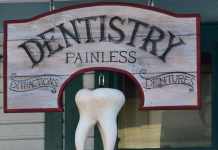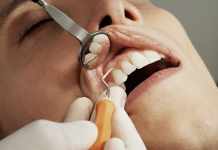Committing to the study of dental procedures is not something that dental professionals do on a whim. The hours spent studying, practicing, and working towards the fulfillment of a specific degree in dentistry last long and come at odd hours. The financial burden of completing an education in dentistry also carries a significant responsibility. So once involved in this profession, knowing that after investing time and money into this pursuit, learning about the hazards dental professionals face comes as a surprise to many students.
Researchers continually look for new ways to improve the practice of dentistry to benefit patients. Just as importantly, many researchers also dedicate substantial amounts of time to creating protective mechanisms and devices with the dental services provider in mind. Many times, dentists, hygienists, and other technicians have suffered injuries while providing services to patients.
During the 2017 American Academy of Cosmetic Dentistry Scientific Session, many new findings and discoveries were discussed. Several speakers relayed information to guests about these breakthroughs. Ways to increase the safety of dental professionals received much less attention, compared to those that benefit patients. However, the major innovation designed to assist those providing care to patients helps protect in more than only one way.
Optical devices used by dentists often only magnify and brighten an area to make viewing easier. Previous models did little to protect the dental care provider from fluids, projectiles, or other contaminants and injuries. Other hazards that technicians face on a nearly daily occurrence include exposure to lasers and radiation from x-ray machines.
Many of the newer cement, ceramics, and composites featured at the Session facilitate the repair of a patient’s teeth, but many times, the blue or ultraviolet lights used during the curing process can cause severe issues for those performing the process. Over time, damaging effects accumulate and dental workers can begin suffering from premature cataracts and other issues.
Dentistry, especially aesthetic dentistry, requires healthy vision, and without such vision, seeing visible flaws becomes inherently difficult. While injuries leading to photo-allergic and photo-toxic reactions might seem unimportant to many, these can warn of more serious problems developing inside the eyes.
Drilling produces debris in the patient’s mouth. Injuries to the eye require only the tiniest of fragments. Fluids that hit the eyes of a dentist or technician can cause infection to set in and spread.
The latest in technology in the way of eye protection covers all of these issues – radiation, lasers, ultraviolet lights, and liquid and solid projectiles. By illuminating the working area more brightly, these protective loupes are the perfect combination for busy dental practices. Technicians and dentists who want to protect themselves while providing the best possible services to their patients find these to protect them while allowing them to see in higher detail than before.
Other recent developments in cosmetic dentistry include more streamlined methods of applying sealants and cement fillers. Improvements in this area included advances that make it easier for dentists to obtain closer matches to existing teeth. Patients already become self-conscious enough when a smile has obvious flaws. Creating a new smile with obvious changes in color can continue to make patients feel less confident.
The newer methods of matching color mean that those who invested time in the dental field can make even bigger differences in their patients’ lives while using the latest in safety gear that keeps them better protected from the risks associated with the dental profession.
As Tijuana cosmetic dentist talks about on their website, “we offer bio-compatible metal-free implants, implant restorations, oral cancer screening, laser dentistry, PRP therapy, a computer-controlled local anesthesia system, digital x-rays, intraoral digital cameras, “one day” dental crowns, smile design, ultrasonic scaling and more.” These are all better systems of treatment than what was available 20 years ago and they will continue to improve for both patients and dental staff as time goes on.



















